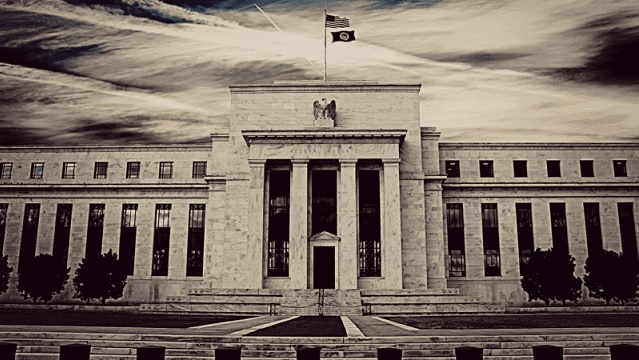Fed In The Red: Federal Reserve System Capital Has Gone Negative

Fed is bankrupt, in the red, keeps spending.
The Fed’s Capital Goes Negative
Recalling the famous line of Everett Dirksen — about how a billion here and a billion there starts to add up to real money — we are talking about serious losses.
By: Alex Pollack, NY Sun, March 31, 202316:00:27 pm
The Federal Reserve’s new report of its balance sheet shows that in the approximately six months ended March 29 it has racked up a remarkable $44 billion of cumulative operating losses. That exceeds its capital of $42 billion, so the capital of the Federal Reserve System has gone negative to the tune of $2 billion — just in time for April Fools’ Day.
This event would certainly have surprised generations of Fed chairmen, governors, and, we’d have thought, newspapermen. The Fed’s capital will keep getting more negative in April and for some long time to come, at least if interest rates stay at anything like their current level. The Fed in the first quarter of 2023 reported losses running at the rate of $8.7 billion a month.
On an annual basis that would be a loss of over $100 billion. Recalling the famous line of Everett Dirksen — about how a billion here and a billion there starts to add up to real money — we are talking about serious losses. These are cash, operating losses. The mark to market of the assets in Fed’s balance sheet also caused an unrealized loss of $1.1 trillion as of September 30.
To see the negative capital from the Fed’s weekly “H.4.1” report, one does have to do a bit of the simple arithmetic of the first paragraph. The Fed’s balance sheet claims its capital is $42 billion, but in violation of the most obvious accounting principle (from which it conveniently excepts itself), the Fed does not subtract its operating losses from its capital as negative retained earnings.
Instead, it accumulates the losses as an opaque negative liability, which balance is found in Section 6 of the report under the title “Earnings remittances due to the U.S. Treasury.” These are simply negative retained earnings: to get the right answer, you just subtract them from the stated capital.
Although the Fed itself and its defenders say that its negative capital and its losses don’t matter to a central bank, they do mean the Fed has become a fiscal drag on the American Treasury, a current cost to the taxpayers instead of a contributor of profits to it, as, just for the record, it was for more than a century.
The situation is certainly unbecoming for what is supposedly the world’s greatest central bank. Did the Fed intend to lose this much money and drive its capital negative? I think that the answer is no. Yet the Fed seems never to have explained to Congress how big a big money-loser and fiscal drag it would become.
The unprecedented $44 billion in operating losses so far, and their unavoidable continuation, are a feature of the post-1971 age of Nixonian fiat money, where the dollar is undefined in statute and unlinked from gold or silver specie.
This has allowed the Fed to have, in effect, made itself into the financial equivalent of giant 1980s savings and loan. Of the Fed’s $8.7 trillion in assets, there is a risk position of about $5 trillion of long-term fixed rate investments funded by floating rate deposits and borrowings.
Of these investments, $2.6 trillion are mortgage securities made out of 30-year fixed rate mortgages. The result is an extreme interest rate risk, which turned into big losses when interest rates rose. This interest rate risk is similar to that of Silicon Valley Bank.
AUTHOR
Pamela Geller
RELATED ARTICLE: DUMPING THE DOLLAR: BRIC Countries Are Developing a New Currency, State Duma Deputy Chair
RELATED TWEETS:
JEAN-PIERRE: "It is their basic job…congress…It is their basic duty to lift the debt ceiling." pic.twitter.com/7yBoaigU1y
— Daily Caller (@DailyCaller) February 1, 2023
"We will not be doing any negotiation over the debt ceiling" — Karine Jean-Pierre pic.twitter.com/3Ik9vwG9I0
— Aaron Rupar (@atrupar) January 13, 2023
EDITORS NOTE: This Geller Report is republished with permission. ©All rights reserved.


Leave a Reply
Want to join the discussion?Feel free to contribute!